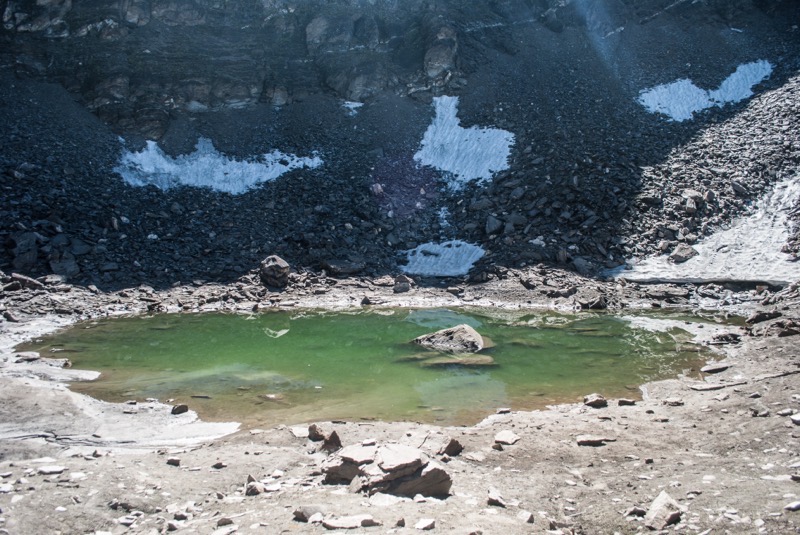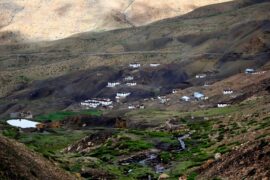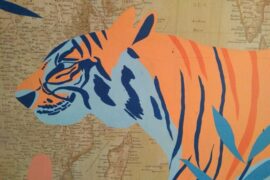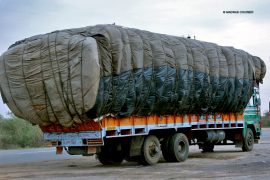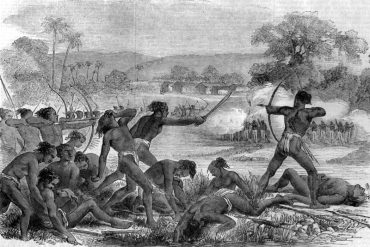In 1942, H K Madhawl, an Indian forest official, stumbled upon hundreds of human skeletons in and around a lonely lake amid the Himalayas. He reported the bizarre find—a mysterious lake where between 300 to 800 people met their tragic end—and the frigid Himalayas continued to preserve the human remains.
Some 16,500 feet above sea level, five days away from the nearest settlement in Uttarakhand, is the Roopkund Lake. Often frozen for most of the year, the lake is situated in the snowbound valley. It is 130 feet wide. On warmer days, however, a terrible sight unveils itself as hundreds of human skeletons, some with flesh still attached, emerge from what has popularly come to be known as the Skeleton Lake.
The gruesome mountain discovery, which was made public in the late 1950s, piqued public curiosity and sparked many investigations that continue to this day. During the month when the ice melts, the bones are apparent in the clear water of the small lake. Along with the remains, wooden artefacts, iron spearheads, leather shoes, and rings were discovered. When a National Geographic crew recovered around 30 skeletons in 2003, several still had flesh clinging to them.
The trek to reach the Roopkund Lake through a 5,000m high ridge, Junargali, is so hazardous that trekkers often joke that a wrong step would add bones to the lake’s existing pile. However, maybe there is some truth in that running joke.
Who were these people, when did they die? What happened to them? Where are they from? Questions began to emerge upon Madhawl’s discovery. British officials believed that the bones represented victims of a covert Japanese invasion force. Terrified, they sent a team of investigators to the site. It was discovered that the corpses were far too ancient to be Japanese soldiers.
Many theories have emerged to explain this mystery. As per an old theory, the bones are the remains of an Indian king travelling with his wife and their attendants. They all died due to a freezing blizzard around 870 years ago. Another theory is that part of the bones belong to Indian soldiers who attempted to invade Tibet in 1841 but were repulsed. More than 70 of them had to make their way home across the Himalayas, where they perished.
A famous folk song in the area tells the story of Goddess Nanda Devi, who unleashed a hail storm “as hard as iron” that murdered those making their way through the lake. Nanda Devi is India’s second-highest peak and is worshipped as a deity.
For almost a half-century, anthropologists and scientists have analysed the bones and puzzled over several concerns.
A study declared the mystery to be solved, concluding that the skeleton belonged to a single group of people from the ninth century. These people belonged to an Indian tribe en route to a pilgrimage. According to the research, the pilgrims died due to a fatal blow on the back of the heads, not due to any weapons, but cricket ball-sized hail.
A much more recent study that had been carried out over 25 years found different results. The research is co-authored by twenty-eight researchers from sixteen institutions based in India, the United States, and Germany. The bones of 38 individuals discovered in the lake were genetically analysed and carbon-dated. It included 15 women, some of whom date back approximately 1,200 years. Scientists discovered that the dead were genetically diverse and that their deaths were separated by up to 1,000 years.
The genomics investigation discovered that one group had DNA comparable to those living in South Asia today, while the other was closely linked to modern-day eastern Mediterranean people, notably those on the Greek island of Crete.
Hence, the remains could not be a result of a single event. In an interview with BBC, Eadaoin Harney, the study’s lead author, established that the research opened up the mystery that had been considered solved earlier. Even the people of South Asia seem to have come from different parts, some from the North, while some from the South. They don’t belong to the same population.
“It upends any explanations that involved a single catastrophic event that led to their deaths,” said Harney. “It is still not clear what happened at Roopkund Lake, but we can now be certain that a single event cannot explain the deaths of these individuals.”
“There are hardly six to seven skulls [with] trauma related to hail,” said Mushrif Tripathy, a co-author of the same investigation. According to Tripathy, the study has brought up more questions than answers. No guns, weapons, or trade goods were discovered at the site. The lake is not even situated on a trading route. Genetic investigations revealed no indication of any ancient bacterial infection that may explain illness as the cause of fatalities.
According to research, credible accounts of pilgrimage in the region do not appear until the late nineteenth century. However, inscriptions in adjacent temples date between the eighth and tenth centuries, suggesting possible earlier origins. A pilgrimage route passing the area could explain why people could have been at the lake, and as a consequence, scientists believe that a mass death caused some of the bones recovered at the site during a pilgrimage event.
However, the theory does not explain what the eastern Mediterranean people were doing at a lonely lake amid the deadly Himalayas. It’s unlikely that Europeans would go all the way from Roopkund to participate in a Hindu pilgrimage. Many such questions baffle scientists and anthropologists as the study continues to solve the mystery.
Roopkund’s enigma unintentionally accelerated the commercialisation of the Indian hiking sector. In 2009, a Bengaluru-based firm offered an inexpensive group trip to Roopkund, which could be booked online. Roopkund trekkers from India came to complete the arduous but rewarding Roopkund trek.
Following this success, similar companies sprung up across the country, popularising new Himalayan trails to meet the high demand, assisted considerably by social media.
Unfortunately, the results of this commercialisation caused severe environmental harm to the auspicious crown of India—the Himalayas. The same Roopkund excursion that first introduced Indians to the mountain slopes is now unavailable due to a government ban on camping in over-exploited, environmentally fragile bugyals.
-30-
Copyright©Madras Courier, All Rights Reserved. You may share using our article tools. Please don't cut articles from madrascourier.com and redistribute by email, post to the web, mobile phone or social media.Please send in your feed back and comments to [email protected]

